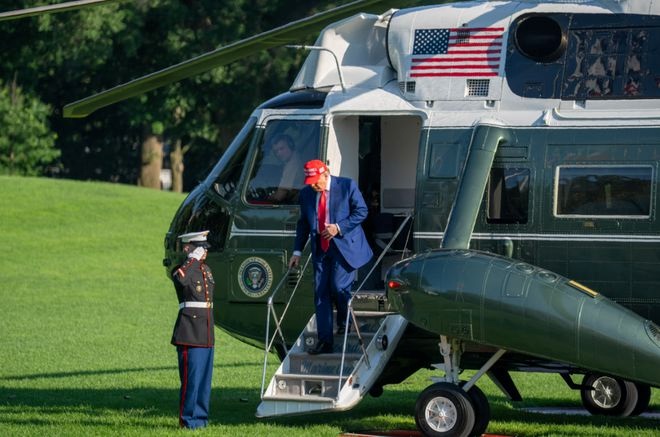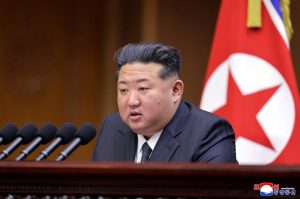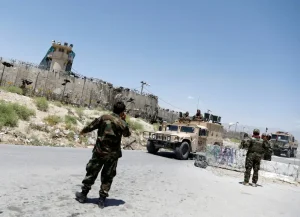Iran’s warning is coming! The Supreme Leader’s adviser called for the closure of the Strait of Hormuz and “launching missile attacks” on US Navy ships

According to the Global Times, according to the latest report of CNN on the 21st, an adviser to Iran’s Supreme Leader Khamenei called for missile attacks on US naval ships and blocked the Strait of Hormuz, a key oil transportation channel.
The report said that Hussein Shariatmadari, editor-in-chief of Iran’s World News, warned that “after the US attack on the Fordow nuclear facility, it’s our turn now.” The report said that Shariatmadari had previously claimed to be the “representative” of Iran’s Supreme Leader Khamenei.
The report quoted Shariatmadari as saying, “We must not hesitate to launch missile attacks on the US Navy fleet stationed in Bahrain, and at the same time close the Strait of Hormuz and prohibit US, British, German and French ships from entering.”
The report also said that Iran’s Supreme Leader Khamenei has not yet responded to the US attack on Iran’s nuclear facilities.
The Strait of Hormuz is located in southwest Asia, between Iran and the Oman Cape of the Arabian Peninsula. Iran is on the north bank of the strait and Oman is on the south bank. It is a narrow strait connecting the Persian Gulf and the Gulf of Oman, important oil producing areas in the Middle East, and the only waterway from the Arabian Sea to the Persian Gulf. The oil transported by international cruise ships passing through here every day accounts for about 20% of global oil consumption.
Previously, Iran had threatened to block the Strait of Hormuz many times, but ultimately did not take action because if the blockade was initiated, the impact on seaborne crude oil trade would spread to the world. If Iran really blocks the Strait of Hormuz, it will push the entire international community to the opposite side, at a huge cost.
The United States “joins the war”, and the situation between Israel and Iran has become more complicated
The different political goals of the United States, Israel and Iran determine that there is no possibility of reconciliation or negotiation among the three parties at present.
The news that the US B-2 bomber attacked Iran’s nuclear facilities was all over the screen early in the morning.
According to Xinhua News Agency, on June 21, local time, US President Trump posted on his social media “Real Social” that the United States has completed the attack on three Iranian nuclear facilities in Fordow, Natanz and Isfahan.
US President Trump said on social media that he had “successfully attacked” three Iranian nuclear facilities. Trump said that all aircraft returned safely. At 10 o’clock that night, Trump delivered a speech to the nation at the White House.
According to CCTV News, the United States dropped six bunker-buster bombs to attack Fordow, Iran, and also launched 30 “Tomahawk” missiles at other Iranian nuclear facilities. Reuters quoted US officials as saying that US B-2 bombers participated in the attack on Iran’s nuclear base.
This is the first time that the United States has sent the Air Force to bomb key Iranian facilities since the establishment of the Islamic Republic of Iran under the leadership of Khomeini in 1979, marking a major escalation of the Israeli-Iranian conflict. So, will the US military be limitedly involved in the Israeli-Iranian war or will it end completely? Will Iran’s retaliation escalate as a result? How will the three parties of the United States, Israel and Iran end? These mysteries deserve further attention.
In his brief speech, Trump said that the bombing was a “spectacular military success” and that Iran’s key nuclear enrichment facilities had been “completely and completely wiped out”.
Earlier, Trump also forwarded a screenshot of an account on X (formerly Twitter) that collects public information from the Middle East in real time on his social media, which said that “Fordo is gone”.
Although Trump has been promoting the great success of bombing Iran’s nuclear facilities, the head of Iran’s national television said that Iran had evacuated three nuclear facilities and transferred nuclear materials some time ago, and the US military’s attack should not have caused a major blow. So far, the International Atomic Energy Agency has not announced any information about the leakage of radioactive materials from Iran’s nuclear facilities.
There are many possibilities here. One scenario is that although Ford was attacked by the GBU-57 giant earth-penetrating bomb (MOP) carried by the US B-2 bomber, it did not cause serious damage. An authoritative military publication analyzed that the MOP can penetrate about 18 meters of concrete or 61 meters of soil before detonating. But the tunnel of the Fordow nuclear facility is said to be located 80 to 90 meters below the surface.
Another possibility is that Iran has indeed transferred nuclear materials before. In fact, in addition to Fordow, Natanz and Isfahan, Iran has many confirmed or suspected sites of nuclear facilities. For example, the International Atomic Energy Agency has determined that there are sites in Marivan and Rawisan in western Iran where nuclear activities have been carried out without declaration.
Of course, there is also the possibility that the Fordow nuclear facility has been destroyed. However, since Iran’s uranium enrichment level is about 60%, it has only reached the initial high-enriched uranium, the radioactivity is not strong enough, and it is deep underground, so the outside world cannot accurately monitor its radioactivity level.
According to CCTV News, a US official said that if the United States joins Israel’s war against Iran, Iran is ready to attack US military bases and equipment in the Middle East. According to CNN on the same day, Iranian officials confirmed that Iran has this intention.
A commentator for Iran’s national television said that every American citizen or soldier at the US military base in the Middle East is now a legitimate target of Iran. Earlier, Iran’s Deputy Foreign Minister also said that if the United States got involved, “the whole region would become hell.”
But judging from the current situation, Iran’s warning may not have enough deterrence. Since the conflict between Israel and Iran on June 13, both sides have been stuck in a stalemate of competing with each other in terms of damage tolerance, but Iran’s losses are obviously more serious.
In addition, with the rupture of the “Shiite Arc” built by Iran in the past, it is now questionable whether Iran can fully mobilize pro-Iranian forces in the region to carry out multi-point asymmetric strikes on Israel or US military bases. Lebanon’s Hezbollah recently said that it would “200%” not intervene in the Israel-Iran conflict.
In addition, according to CBS, a source revealed that the United States had contacted Iran through diplomatic channels on June 21, saying that the attack was entirely a US plan, but “Iran’s regime change was not in the plan.”
In terms of foreign policy, especially its strategy toward the United States, Iran has always had serious internal contradictions and lacked stable strategic considerations and mobilization capabilities. The bombing of the US military has made Iran taste the bitter fruit again, but the latest statement of the United States can be regarded as a candy for Iran to a certain extent.
Is peace even more out of reach?
After the US Air Force bombed Iran’s nuclear facilities, Israeli Prime Minister Netanyahu issued a statement thanking Trump, saying that Trump’s bold decision to target Iran’s nuclear facilities will “change history.”
But it should also be noted that although the United States and Israel have common interests in destroying Iran’s “nuclear threat”, the political goals they want to achieve are not exactly the same. Trump faces a double attack from Jewish capital and MAGA (Make America Great Again) on whether the United States will end. Jewish capital hopes that the United States will intervene, while MAGA believes that the United States’ involvement is not in line with the purpose of “America First”.
This should be the reason why Trump was hesitant before. The dispatch of the US Air Force and submarines to bomb Iranian facilities, and then evacuate and inform Iran that it will not overthrow the current regime, shows that Trump has chosen a limited intervention approach. This may be the best solution to both Jewish capital and MAGA.
But the situation is different for Netanyahu. Netanyahu originally faced three charges of bribery, fraud and breach of public trust, but was able to evade the charges only because Israel was in a state of war. The main supporters of his wartime cabinet, the Jewish Power Party and the Religious Zionist Party, have said that they will leave the cabinet if the state of war ends.
Therefore, in the Gaza conflict and the Israel-Iran conflict, Netanyahu is more willing to expand and complicate the situation. This is why Netanyahu keeps claiming that the Israel-Iran conflict may be protracted and does not hesitate to threaten to take action against Iran’s supreme leader.
This means that Trump’s roadmap of “destroying Iran’s nuclear capabilities first and then talking about peace” is difficult for Netanyahu to work. Even if Iran’s nuclear facilities are destroyed, Israel may not stop soon.
For Iran, ensuring the stability of the regime and the right to peacefully use nuclear energy are its unshakable goals.
The different political goals of the United States, Israel and Iran determine that there is currently no possibility of reconciliation or negotiation among the three parties. The possible conciliatory remarks at the moment may be bait, used to buy the time needed by both parties: time for Iran to clean up its internal affairs, time for Netanyahu to continue his political career, and time for Trump to resume his core agenda such as tariff war and strategic focus shift.
In this case, peace between Israel and Iran is probably more distant than the underground nuclear facility in Fordow.
![]()







